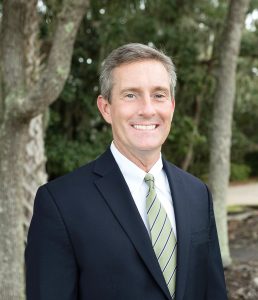On December 20th, 2019, President Trump signed the Setting Every Community Up for Retirement Enhancement Act (SECURE Act, for short) into law. The bill is intended to encourage retirement savings by making several changes to the Internal Revenue Code of 1986.
The SECURE Act received broad bipartisan support, sailing through both the House (297 – 120) and the Senate (71 – 23). It is a landmark piece of legislation, and the largest retirement planning reform since the Pension Protection Act of 2006. Now that it’s officially the law of the land, one important question remains: what effect will the SECURE Act have on your retirement strategy?
We’ve spent the past few weeks analyzing the ins and outs of the bill, and we’ve identified the areas where the SECURE Act is most likely to impact your retirement planning. Here are the key takeaways.
Rule Changes for Required Minimum Distributions (RMDs)
In the past, if your retirement savings were held in a traditional, SEP, or SIMPLE IRA, you had to start taking Required Minimum Distributions (RMDs) in “the year in which you turn 70 ½ years old.”
Under the SECURE Act, the starting point for RMDs has been pushed back to the year in which you turn 72, giving investors more time to keep funds invested before paying taxes on the distributions. This rule is not retroactive, so investors who have already begun taking their RMDs must continue their distribution schedule.
The extra 18 months should factor into everyone’s retirement planning strategy. However, it’s particularly important for those who will turn 70 ½ in 2020 or 2021 and must decide whether to defer RMDs until age 72 or move forward with their distributions as planned. If you’re in this situation, we urge you to connect with our team as soon as possible. We can provide a custom analysis and help you choose the best course of action.
The “Stretch IRA”
In years past, it was common for a traditional IRA to be left to a beneficiary. That account could be transferred into an “Inherited IRA” in the beneficiary’s name, and the beneficiary would receive RMDs over the course of their lifetime. The inherited IRA could also be left to yet another beneficiary, prolonging the amount of time the underlying investments could grow tax-deferred.
Under the SECURE Act, the loophole that allowed these so-called “stretch IRA” accounts to exist has been closed: as of January 1st, IRA and 401(k) beneficiaries, whether individuals or trusts, are now required to withdraw the entire inherited account within 10 years of the original account owner’s death. (The law does make an exception for spouses, minor children, and those less than 10 years younger than the deceased.)
Since IRA and 401(k) withdrawals are taxed as ordinary income, this represents a potentially massive tax hit. Before the SECURE Act, the goal was to defer tax liability for as long as possible; under the new law, investors and advisors may need to find alternative strategies for minimizing tax burdens.
Other Important Changes
While new RMD requirements and the elimination of stretch IRA accounts are the most significant changes, there are a few other updates in the SECURE Act that are worth noting.
First, individuals over the age of 70 ½ are now allowed to contribute to their IRAs as long as they have earned income. Many Americans are now working until later in life, and the new law allows them to continue putting tax-deferred funds aside for retirement.
Another change brought about by the SECURE Act is that all part-time workers are now eligible to participate in employer-sponsored retirement plans. Under this new provision, companies are required to offer the opportunity to set aside money for retirement to part-time employees. Before the SECURE Act, only 40% of part-time workers had access to retirement plans,[1] which is why this provision is so significant. Last but not least, annuities may now be held within many employer-sponsored retirement plans.
The SECURE Act represents a significant change in retirement law, specifically as it pertains to RMDs and estate planning. We encourage you to connect with our team for a custom analysis of your retirement planning strategy and how this new legislation could impact your financial future.
ABOUT THE AUTHOR: Emerson Ham III, CIMA®, CFP®, CPWA®

Emerson co-founded Sound View Wealth Advisors to serve clients in an objective, transparent and independent environment. An investment strategist and portfolio designer, he creates tailored portfolios that reflect each client’s objectives, risk tolerance, time horizons and investment preferences.
Prior to Sound View Wealth Advisors, Emerson had a 26-year career at Merrill Lynch, where he was a co-founder of the Bouchillon, Ham & Dekle Group, serving as investment strategist and portfolio designer. He is a Certified Financial Planner™, a Certified Investment Management Analyst®, and a member of The Financial Planning Association.
Emerson is active in a number of charitable organizations in Savannah, is a member of the Kiwanis Club of Skidaway Island, and is very engaged in the local soccer community as a participant, coach and volunteer. Emerson is a proud father of three, as well as an avid outdoorsman with a passion for snow skiing and spending time in the mountains.
[1] U.S. Bureau of Labor Statistics, The Economics Daily, March 2018. (Link)





